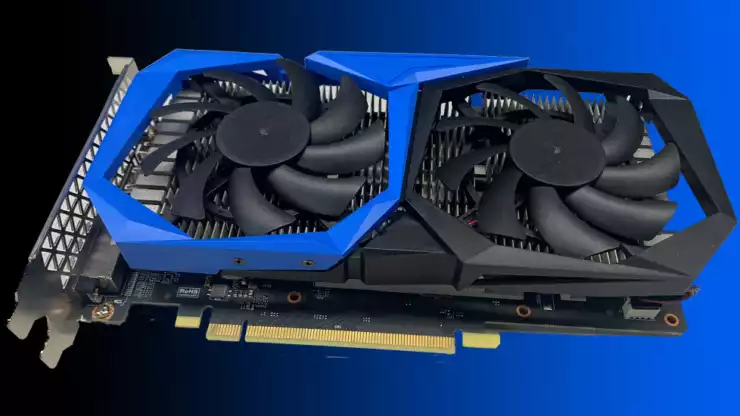Update: Despite the obvious similarity in design between Colorful's graphics card and the Intel Xe pictured above, it appears that Colorful does not manufacture Intel Iris Xe graphics cards.
In a statement posted on Facebook (via Videocardz), Colorful clarifies that they have the wrong person.
Intel Iris Xe's website mentions only Asus by name and mentions that the card pictured above is from "another partner."
The image, which shows a card not unlike Colorful's Tomahawk RTX 2060, was initially named in the file name It is said that the word "colorful" was also in the file name, but this may have been a red herring of sorts and has since been removed.Original Story The first AIB board with Intel's Xe graphics was released; Asus and an unnamed partner were the first to jump in with Intel under the Intel Iris Xe brand, creating a board based on Intel's early DG1 GPUs. The board pictured above, in particular, has a dual-fan cooler and walks and talks like a full-featured add-in graphics card.
These are not the first add-in boards based on Intel's Xe technology, but previous examples were manufactured in-house by Intel. These are the first for retail, and the new boards represent a tentative first step by Intel to emulate the broader ecosystem of partner boards offered with GPUs from graphics specialists AMD and Nvidia. For now, these cards are OEM models available only in system builds and cannot be purchased individually by the general public.
The DG1 GPU is, of course, a known one, as it is also found in Intel's Tiger Lake laptop CPUs. This GPU operates at the low end of the discrete graphics market. However, in this implementation, the number of execution units is slightly reduced from 96 to 80.
Regardless, the DG1 is designed to add 3D and multimedia performance at an affordable price, rather than aiming for the upper end of performance. According to Intel, the board offers three display outputs, hardware video decode and encode acceleration including AV1 decode support, Adaptive Sync and Display HDR support, and DP4a deep learning inference acceleration, as well as artificial intelligence capabilities with DP4a deep learning inference acceleration. The board is equipped with 4GB of VRAM and operates at a core clock of 1,700 MHz or higher.
Ultimately, these boards are more about the implications for the future rather than the gaming performance they offer today. Rather, it is the upcoming Xe DG2 boards that have the potential to shake up the graphics industry.
Data included in recent Intel graphics drivers indicate that the top-of-the-line DG2 board will offer a full 512 Intel-style execution units, a graphics card that can compete with the likes of the Nvidia GeForce RTX 3070 This suggests that it is a graphics card that can compete with the likes of the Nvidia GeForce RTX 3070.
In any case, these Partner DG1 boards at least suggest Intel's continued commitment to promoting Xe, which is no doubt quite significant given Intel's broader woes and impending leadership change. For us gamers, the emergence of a third player in the graphics market to compete with AMD and Nvidia will be very welcome competition.


Comments